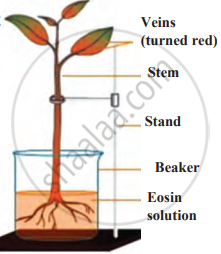Root pressure is the process by which water and minerals from the soil are absorbed by root cells and transported upward through the plant. This happens due to a difference in concentration between the water and minerals in the soil and those inside the root cells.
Working:
- Absorption: The root cells absorb water and minerals from the soil, causing them to swell and become turgid (firm due to water pressure).
- Pressure Creation: The turgid cells exert pressure on adjacent cells, pushing water and minerals into the xylem (the tissue responsible for water transport).
- Formation of a Water Column: As water and minerals are continuously pushed forward, they create a continuous column of water inside the xylem.
- Upward Movement: This root pressure is strong enough to lift the water column upward in small plants, shrubs, and small trees.
Root pressure ensures that water and minerals are steadily transported to the upper parts of the plant, supplying the necessary nutrients for growth and photosynthesis. However, in tall trees, additional mechanisms like transpiration pull are required to move water to greater heights.

Absorption with the help of roots


